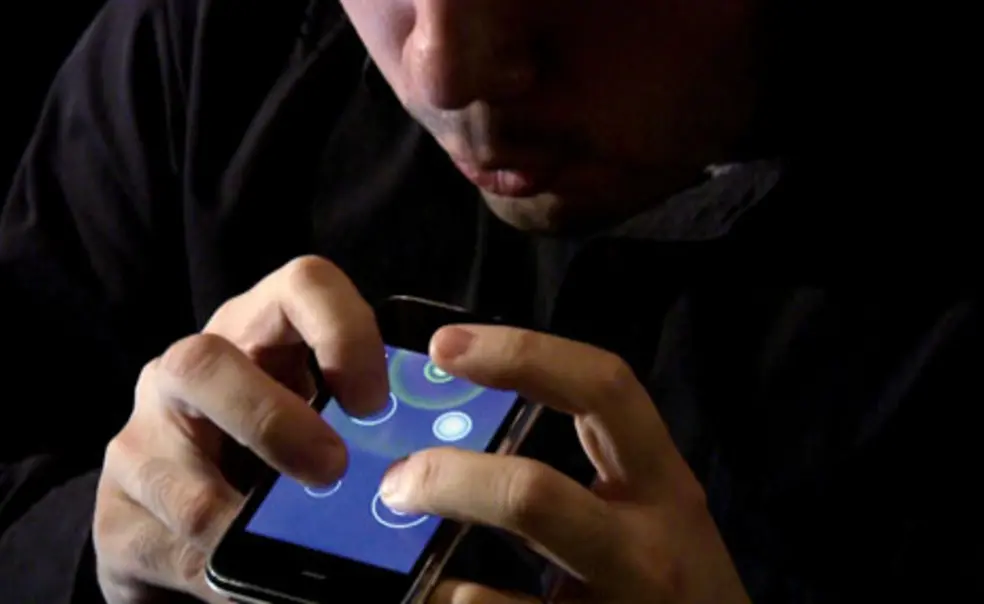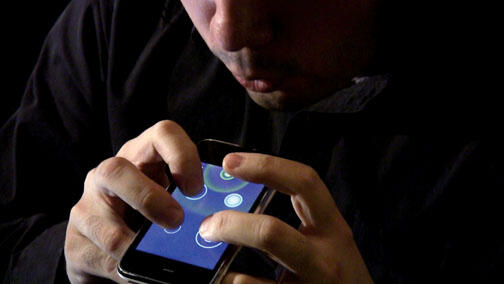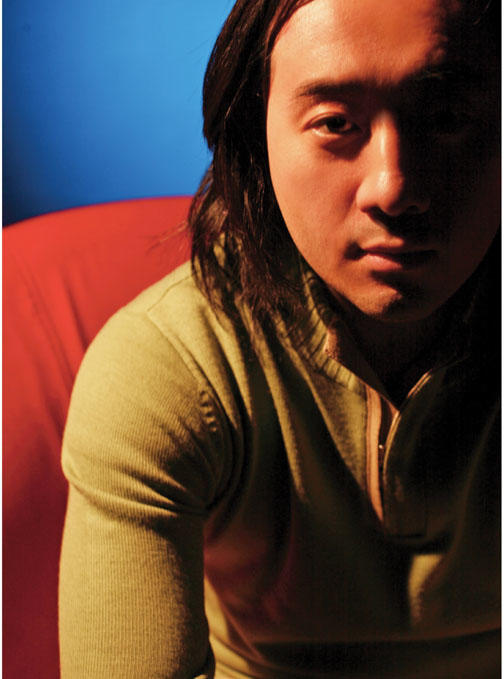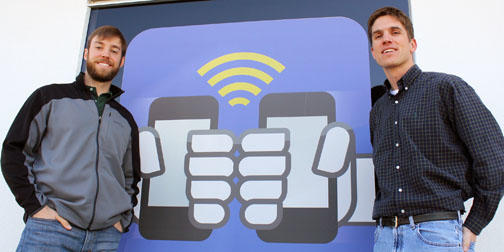Making your phone a flute, and more
Alumni, student ‘apps’ are tools for medicine, transportation, music — even baseball
Want to hear “Stairway to Heaven” on an iPhone? You can take the easy route — find the track in your music library and press Play.
Or you could turn your phone into a musical instrument and try playing the song by yourself.
The latter option is made possible by Ge Wang *08, a computer scientist with a deep interest in music. Wang and his colleagues created Ocarina, an application for the iPhone and iPod Touch that lets users blow into the device’s microphone to make a sound, manipulate virtual finger holes on the touch-screen to change pitch, and tilt the phone forward to add vibrato. You even can listen to other Ocarina players around the world.
Wang has a history of creating new and innovative forms of music. His ChucK audio programming language was a driving force behind the Princeton Laptop Orchestra, and he started a sister ensemble at Stanford, where he is an assistant professor. But Ocarina is his greatest success: It was downloaded more than 1 million times (at $0.99 each) in its first 10 months on the market.
“If you were to tell me a year ago that a million people were going to be using something I designed and making music by blowing into their iPhones, I would have been fairly skeptical,” Wang says.
Unexpected success has been a common theme for a small group of Princeton alumni and students who have created “apps” for Apple’s mobile phone and handheld computer. Andy Huibers ’92 and David Lieb ’03 came up with Bump, which enables people to swap contact information by bumping their phones together. The iPhone contains a device that detects acceleration and tilt, so it “feels” the bumping motion, Lieb explains. The Bump application then sends information to a server and matches phones that felt the same bump at the same place and time.
Huibers and Lieb released the app for free, to see if people would use it. Tech experts gave favorable reviews, and Bump received a publicity boost in April when it was the one-billionth download from the App Store. By mid-October, more than 4.8 million users had downloaded the application.
Success in the tech world has led to interesting encounters in the real world. When Lieb went to a San Francisco Giants game with one of Bump’s investors, he struck up a conversation with the man next to him and swapped information. Afterward, he says, “I realized it was [rapper] MC Hammer that I just bumped with.”
Lieb and Huibers aim to make Bump a ubiquitous technology for connecting two phones in person. Many app developers have smaller niches in mind.
Matt Connor ’11, who once worked at an Apple Store, thought that the iPhone could help diabetics manage their health if it were set up to record information such as blood glucose readings, carbohydrate intake, and insulin injections. So Connor and his brother Michael studied the Apple programming platform and created an application called Islet (named for the pancreatic cells that produce insulin).
The first release was relatively basic, Connor says, but he believed that the idea had room to grow. He applied for a grant from the nonprofit Center for Integration of Medicine and Innovative Technology (CIMIT), drafting his proposal last spring in the little free time he had between engineering courses and baseball practices. CIMIT awarded $100,000 to help him expand the iPhone app and a Web-based companion.
LEXIPHANES LEXIDIUM,ALK Technologies, a company started by Alain Kornhauser *71, a Princeton professor of operations research and financial engineering, provides turn-by-turn directions with its satellite navigation app, COPILOT LIVE.
John Buchanan ’87 and his brother Andy, authors of a series of guidebooks for famous baseball parks, released WISE GUIDE WRIGLEY FIELD, an app that gives fans insider tips about the stadium and includes an interactive trivia quiz.
In addition to Ocarina, Ge Wang *08 and his colleagues developed LEAF TROMBONE WORLD STAGE, an iPhone musical instrument that includes an instructional element and a chance to rate the performances of other users. Graduate student Rebecca Fiebrink has worked with Wang’s company, Smule, on an app called I AM T-PAIN, a voice synthesizer that enables users to sound like the popular hip-hop star.
The ITRANS series of apps, which provide offline directions and public transit maps for a handful of U.S. cities, began as a class project for a team of Princeton computer science students.















2 Responses
José Richner ’03
10 Years AgoMore alumni apps
I just read the wonderful article about student and alumni apps for the iPhone (Alumni Scene, Nov. 4). What a lovely surprise to learn that two very well known apps — and some of my personal favorites — in the iTunes store, Bump and Ocarina, were designed by fellow Princeton graduates.
I also am an iPhone developer, having designed four apps in the last year, and a Princeton alumnus. My company, Vaya Broqui (Puerto Rican slang for “hey dude”), has concentrated on creating musical apps that highlight some of my country’s traditional music and instrumentation. Our first app, Parranda, has been a modest hit in the iTunes Store (more than 10,000 downloads) and led us to work on Parranda Cuatro and Parranda Plena Libre — two additions to our musical app family that debuted in time for the holiday season. We also developed an indie music compilation app featuring bands from Puerto Rico to benefit a local nonprofit organization that rescues stray animals from the island’s streets (SaveASato.org). Vaya Broqui’s new Web site, www.vayabroqui.com, features demo videos, descriptions, and our blog.
Peter R. Carney ’53
10 Years AgoPhone app for Yellowstone
I read with interest the letter from Alfredo José Richner ’03 (Feb. 3) about the iPhone apps that he had created. Not wanting to be left out, I have created an app that recently was approved by Apple for inclusion in the App Store.
The application is “Geo Roamer Yellowstone,” a GPS-activated audio and visual guide to Yellowstone National Park. As you drive through the park, the GPS signal will activate the iPhone and tell you about the locations that you are approaching. The information was gathered from park historians, naturalists, and archivists, the real experts on the park. More than 125 locations are identified, with stories and information about each of them. They are shown on the moving map that is part of the application. Park passes and lodging or campground reservations also can be obtained from this program. One can drive through the park and have the phone tell you what you are looking at. There is no thumbing through guidebooks or road guides to distract you from enjoying the splendor of Yellowstone.
The concept of the application was initiated 15 years ago as a funding mechanism for the Wyoming Chapter of The Nature Conservancy, but it was restricted to a laptop, a GPS antenna, and a bunch of wires. Now the cell-phone technology has caught up to the idea that permits this knowledge to be delivered in a very cost-effective medium.
I first visited Yellowstone on a geology field trip in 1951 led by Dr. Erling Dorf and was in total awe of the work of this turbulent earth. Dr. Dorf was a stimulating teacher of field geology and had us all speculating on how these wonders came to be. It convinced me to major in geology, a field that I have been in my adult life. I was fortunate to have had exposure to the knowledge of Dr. Dorf and his department, and because of this I wanted similar information to be made available to other park visitors.
In the Nov. 18 President’s Page, Betty Leydon, vice president for information technology at Princeton, cited “geolocation technology” as one of the three emerging technologies of the future. I totally agree with her foresight.